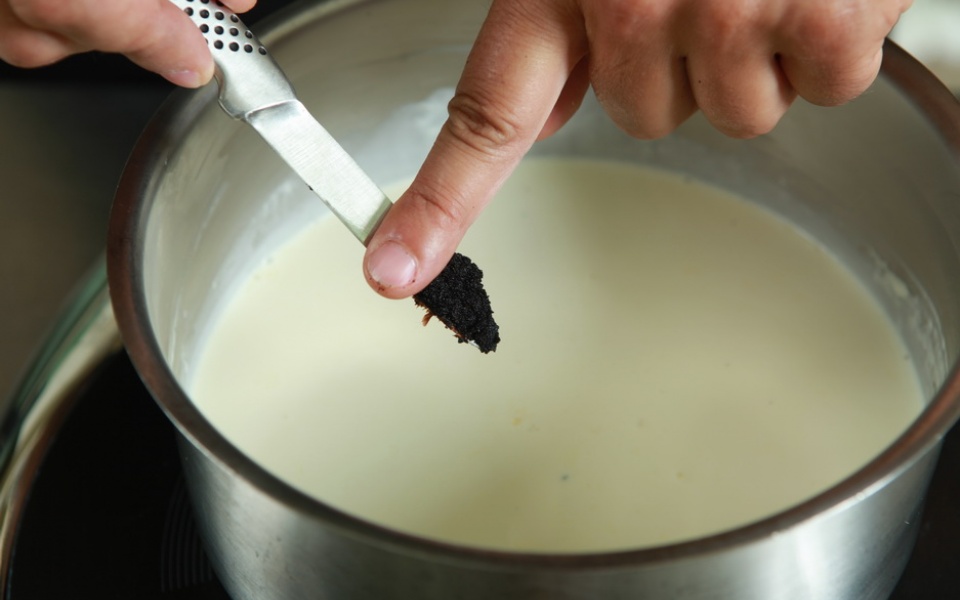 TIPS
TIPS

When talking about oven custards, we tend to think of crème brûlée.
See how to make crème brûlée, following the photos order.
-
Place the milk and cream mixture, half the sugar and the aromatic ingredients you may be using (e.g., vanilla, cinnamon, etc.), in a pan over medium to high heat and cook without stirring until the mixture arrives at just below boiling point (around 80°C).

-
Place the remaining sugar and yolks in a bowl and mix.

-
Remove the pan from the heat and leave covered for 15 minutes so that the aromas develop.

-
Add the yolks to the cream mixture, stirring constantly.

-
Strain through a fine sieve.

-
Fill ovenproof bowls (ramekins);
100-150 grams is a good quantity for an individual dessert.

-
Place ramekins on a baking tray and fill half way up with water.
Place in a pre-heated oven at 100°C, preferably with the fan.

-
Cook until the cream sets, approximately 50-60 minutes.
When you move the tray from the oven, the cream should have the consistency of jelly. To be sure, use a knife to see if the cream is still liquid. This point requires particular care so as not to overcook the cream; in this case the egg will break and you’ll end up with a sweet omelet. Observation and repetition will bring the desired result. If you have a thermometer, the cream’s internal temperature should be around 82°C.
Cool and store in the fridge covered with cling film.















